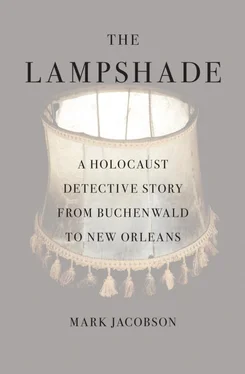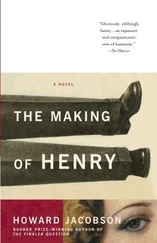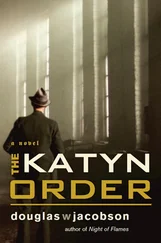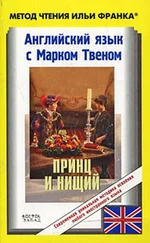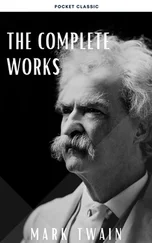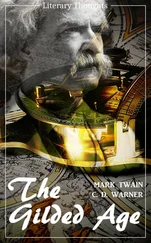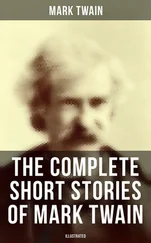“I have often wondered, for fifty years I wondered,” Minyard said in his slow drawl, “whatever happened to those cadavers we used to dissect back in school. You know, a cadaver is very important to a young medical student. Sometimes you’d take a piece home. A hand, or even a whole arm, so you could look at the insertion of the tendons, things like that. You didn’t want anyone to see you on the streetcar with it, but you cared about your cadavers. You became attached to them, even gave them names. And now, I see, here they are.”
Minyard pointed to a monument erected by the Bureau of Anatomical Services honoring those “who have donated their bodies to science.”
The coroner took a moment before asking, “So did you ever find out more information about that lampshade?”
I briefly filled Minyard in on all that had happened since we’d last talked, and I told him that with so many other options off the table, I was thinking of burying the lampshade in accordance with Jewish religious law.
“Burying it here in New Orleans?” Minyard said, rolling the idea around in his head. “Well,” he said, “this is the end of the river. Biggest river system on earth, things carried along with the current from as far off as Montana. A lot does get buried here.”
Then Minyard spoke of the coming storm, Gustav, remarking that the weather reminded him of the days immediately before Katrina. He asked me if I was getting out of town. I said I had a flight back to New York, but if the airport closed, I’d drive to Houston and fly from there. Minyard said that sounded all right. “Just make sure you go.”
It was something to think about as I walked across Canal Street to the old Jewish cemetery, called the Dispersed of Judah, a phrase that appears often in the literature of exile, most prophetically, according to many Christian Zionists, in Isaiah 11:12, where God, after speaking metaphorically of an anointed “branch” that will grow from the roots of the tree of Jesse, informs the prophet of his plan to “assemble the outcasts of Israel,” to “gather together the dispersed of Judah from the four corners of the earth.”
Opened in 1846, the cemetery differs from the other, better-known New Orleans Cities of the Dead in that the bodies are buried in the dirt rather than in aboveground crypts and mausoleums. Like using biodegradable, nail-free pine boxes as coffins, this Jewish practice, devised in a desert land many thousands of miles from the soggy swamps of the Mississippi Delta, is based on the notion that the body, like dust, should eventually return to the earth from whence it came. [24] Probably the best source for information about the New Orleans Jewish community is Catherine Kahn, coauthor of The Jewish Community of New Orleans, former president of the Southern Jewish Historical Society, and longtime archivist at Touro Infirmary. An exceedingly charming lady who has been known to greet a visitor with a hardy “Shalom, y’all,” Cathy Kahn is Albert Rosenberg’s cousin. When I was in El Paso visiting Rosenberg, he said, “Well, if you want to know anything about Jews in New Orleans, call my cousin Cathy. She has it all down.” Offering to make an introduction, Rosenberg dialed his cousin’s number. She wasn’t home, so he left a message. “Hello, Cathy, this is Albert, calling from El Paso… Look, I’m talking to this nice young man who is doing some research on a parcel found in your neck of the woods. It is a lampshade made of human skin. Help him if you can, would you please? Ciao .” Hanging up, Rosenberg, a sardonic glint in his eye, said, “That ought to get her attention.” The next time I was in New Orleans, I looked up Cathy and we had a nice chat. She asked me what I was writing about; I told her about the lampshade. “Oh, so that’s what Albert was talking about,” Cathy exclaimed. “I knew it was something strange.”
Even with Gustav still two hundred miles out into the Gulf, the gravestones at the Dispersed of Judah, mute witnesses to so many storms, had a forlorn aspect. A few flowers might have spruced things up, but not many people place flowers on the graves of people who died in 1867. Certain names came up again and again on the lichen-stained headstones. Present were several members of the D’Meza family, who like Judah Touro were descendants of the first waves of Spanish and Portuguese Sephardim expelled from Europe during the Inquisition. There was the large monument for Abraham D’Meza, dutifully noted as the “president of this congregation,” and his wife Zipporah, dead within two months of each other in 5632, or 1872. A far smaller stone marked the grave of Estelle D’Meza, aged ten months, who succumbed during the influenza outbreak of 1878, or 5640. Also well represented was the Marks family, once of the London Jewish community. Monuments noted the graves of Joseph Hart Marks, David Hart Marks, Theodore Marks, Edwin Marks, Marion Marks, and Washington Marks, all of whom enlisted on the Confederate side during the Civil War. Washington Marks, a colonel and later a Democratic party politician, so distinguished himself at the Battle of Vicksburg that a statue was erected in his honor.
So this was where these Jews, these particular dispersed of Judah, their families hounded across the globe, residents of the Louisiana once governed by le Code Noir, which decreed practicing Hebrews be banished, had found their final rest. If Jews turned up in the most incongruous places in the world, so did their dead. Yet, after Buchenwald, Auschwitz, and the rest, it is a blessing to see the graves of a thousand Jews who weren’t dead from violence between 1933 and 1945. Confederate or not, these Jews, like my dead relatives in Elmont, New York, had gotten through an entire lifetime without being murdered by a Nazi.
Yes, I thought, if I were a human skin lampshade who might or might not have been constructed by a doomed Jewish shoemaker at the behest of a mad red-haired woman on a horse, and then found sixty years later by a dope fiend in an abandoned house after the worst storm in United States history, there could be worse places to return to the earth than inside the gates of the Dispersed of Judah. Being right across the streetcar tracks from the monument to Katrina’s unclaimed, the spot made a good deal of sense.
Shiya Ribowsky, the forensic cantor and my adviser on Jewish clerical matters, told me that if I truly wanted to bury the lampshade, I might as well find an Orthodox rabbi “just to be on the safe side.” Who knew what the Reformists and the like believed in a place like New Orleans? They were probably holding crawfish boils as some kind of Lenten ecumenical outreach program. If the Orthodox rabbi had any Halachic issues, Shiya said, I should inquire about the possibility of burying the lampshade along with shaymos —sacred ritual objects like tallis prayer shawls and tefillin phylacteries that, being inscribed with the name of G-d, were to be interred with the same respect as the human body.
“Ask them if they can put it in with the shaymos, mention the building fund, and you should be fine,” counseled Shiya, offering to fly down to New Orleans to sing the mourner’s Kaddish at the burial ceremony.
The Orthodox rabbi selection in New Orleans is not extensive, but the choice of Rabbi Uri Topolosky, the energetic thirtysomething installed as the spiritual leader of the Beth Israel temple in 2007, was obvious from the start. For one thing, Beth Israel was the congregation most affected by Hurricane Katrina. Founded in 1904, it was once the largest Orthodox temple in the South, observing the High Holy Days in a lavish Byzantine Revival synagogue on Carondelet Street. The congregation moved to the “safe” Lakeview section in the 1960s, where temple membership had declined to a hundred families by the time the storm surge from Lake Pontchartrain left ten feet of water in their Canal Boulevard shul. Fearing for the fate of its seven Torahs, the temple contacted representatives of ZAKA, the Jerusalem-based emergency response unit (the name in Hebrew stands for “Disaster Victim Identification”). In Israel, ZAKA volunteers have become a familiar sight in the aftermath of terror attacks and other disasters, collecting body parts and spilled blood of Jews to ensure they receive a proper religious burial. (In Jerusalem I’d called them to see what they had to say about the lampshade and was told, “If it is Jewish, it should be buried. If it is not Jewish, it can also be buried, but we’re not involved.”) The group, which also rescues sacred materials, arrived in New Orleans via National Guard helicopter to retrieve Beth Israel’s holy scrolls, which they whisked away in motorized inflatable boats. Its temple ruined, Beth Israel, minus nearly half its congregation, had no choice but to accept temporary quarters at the Gates of Prayer, a Reform temple in Metairie, the district David Duke had once represented in the state legislature. It was then, their rabbi opting to remain in Tennessee, that Beth Israel hired Uri Topolosky, who had been an assistant rabbi in the Riverdale section of the Bronx.
Читать дальше
